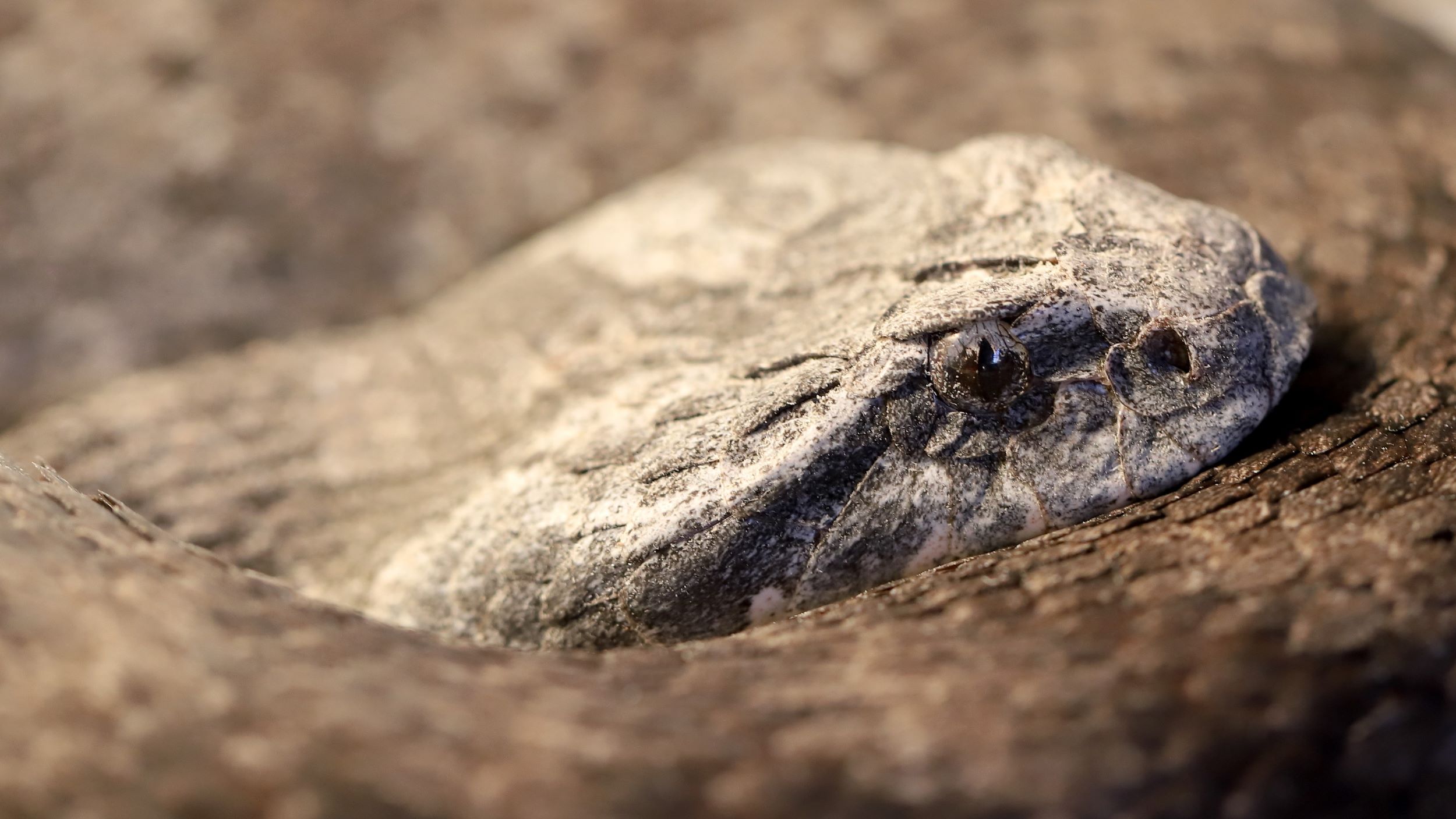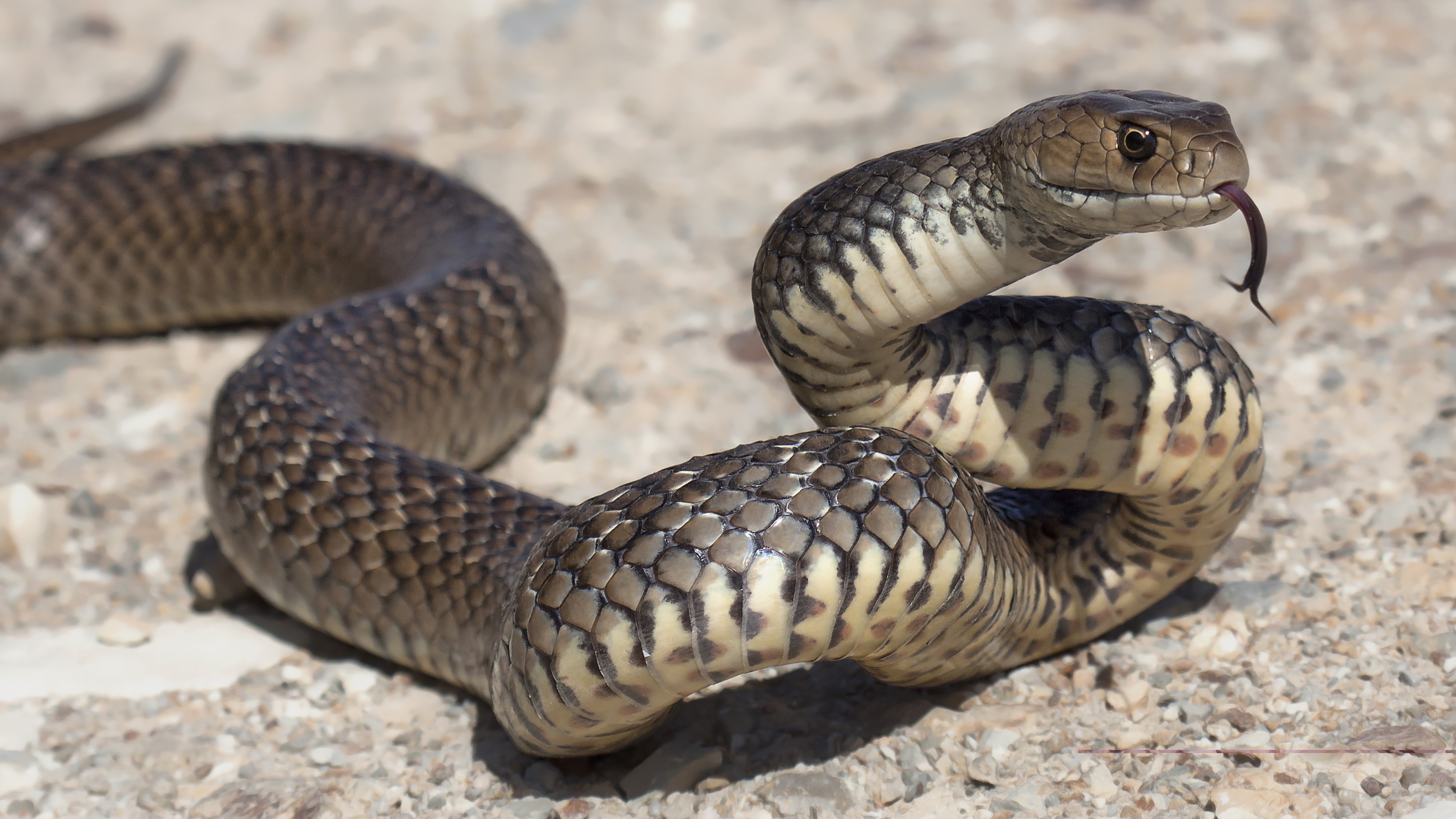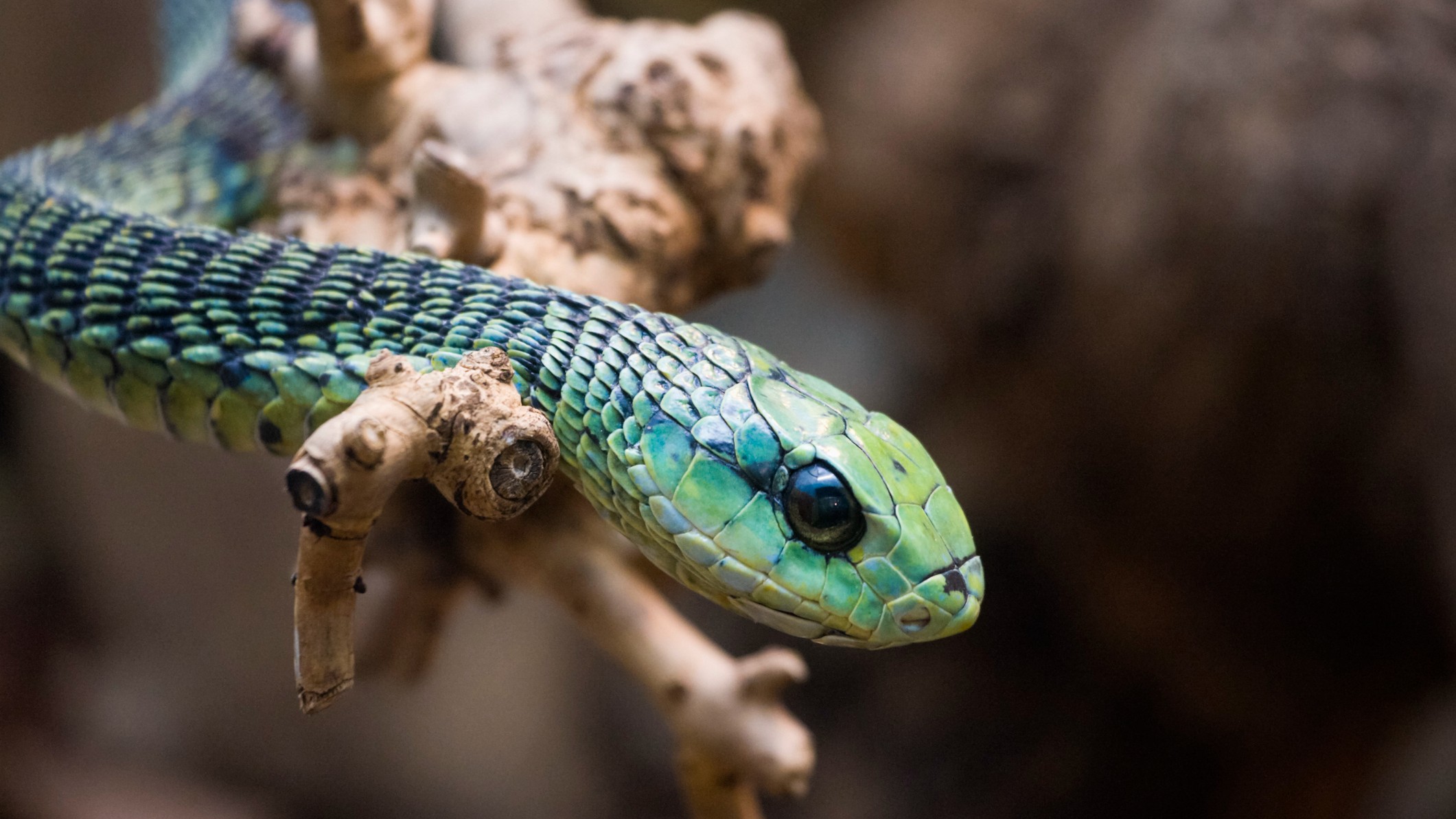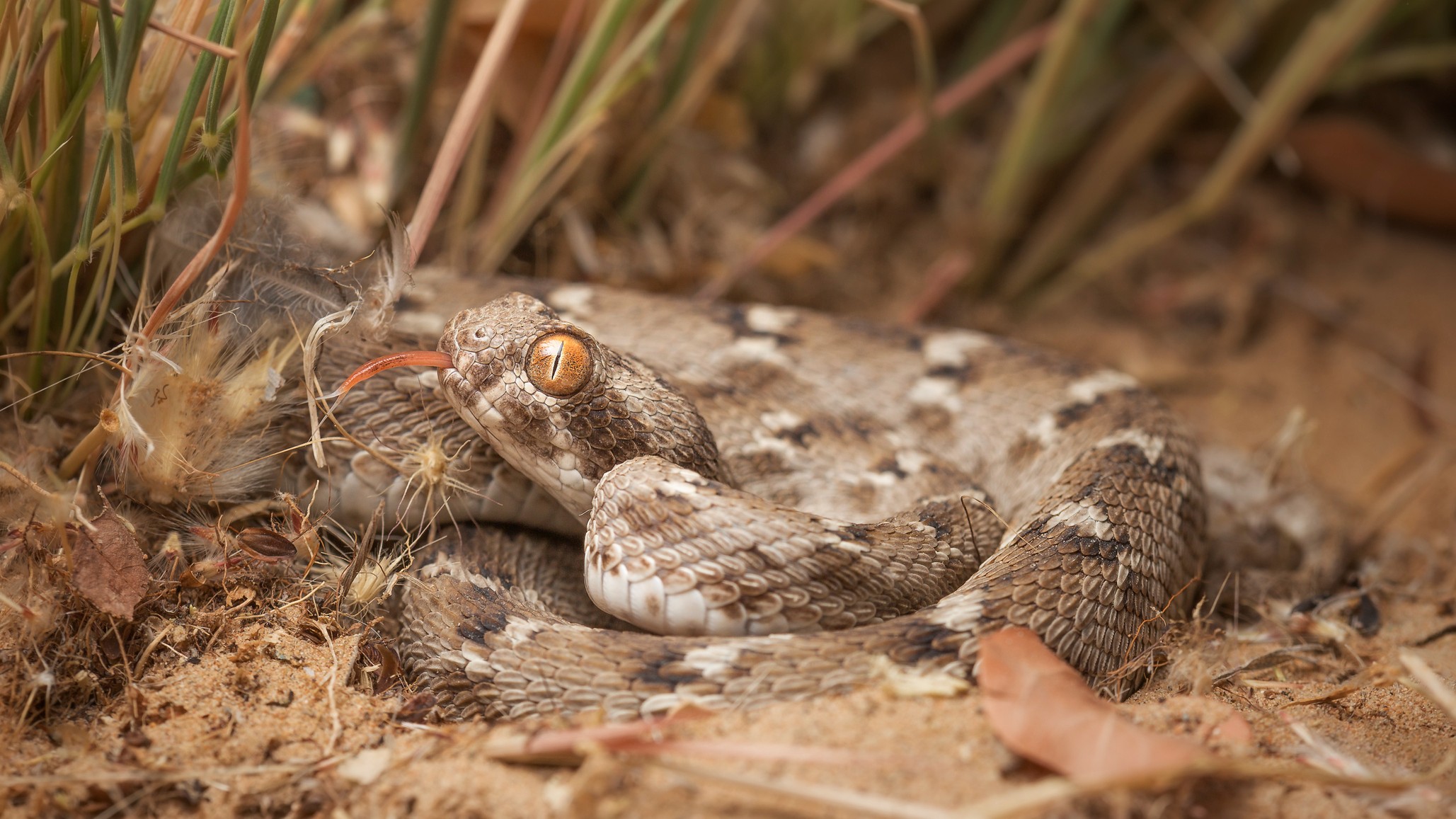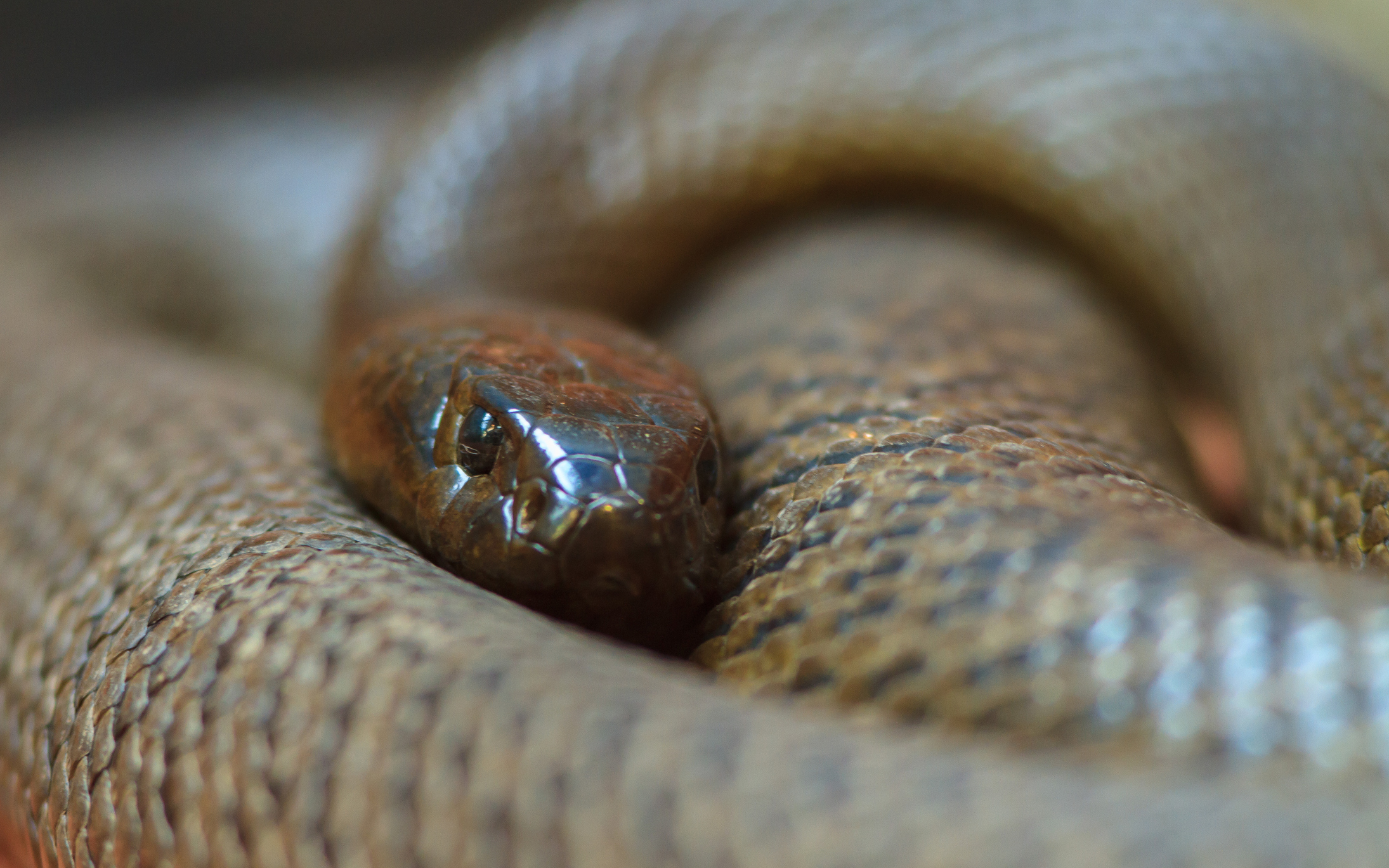13 of the most venomous snakes on the planet
An encounter with one of these venomous snakes could cost you your life.
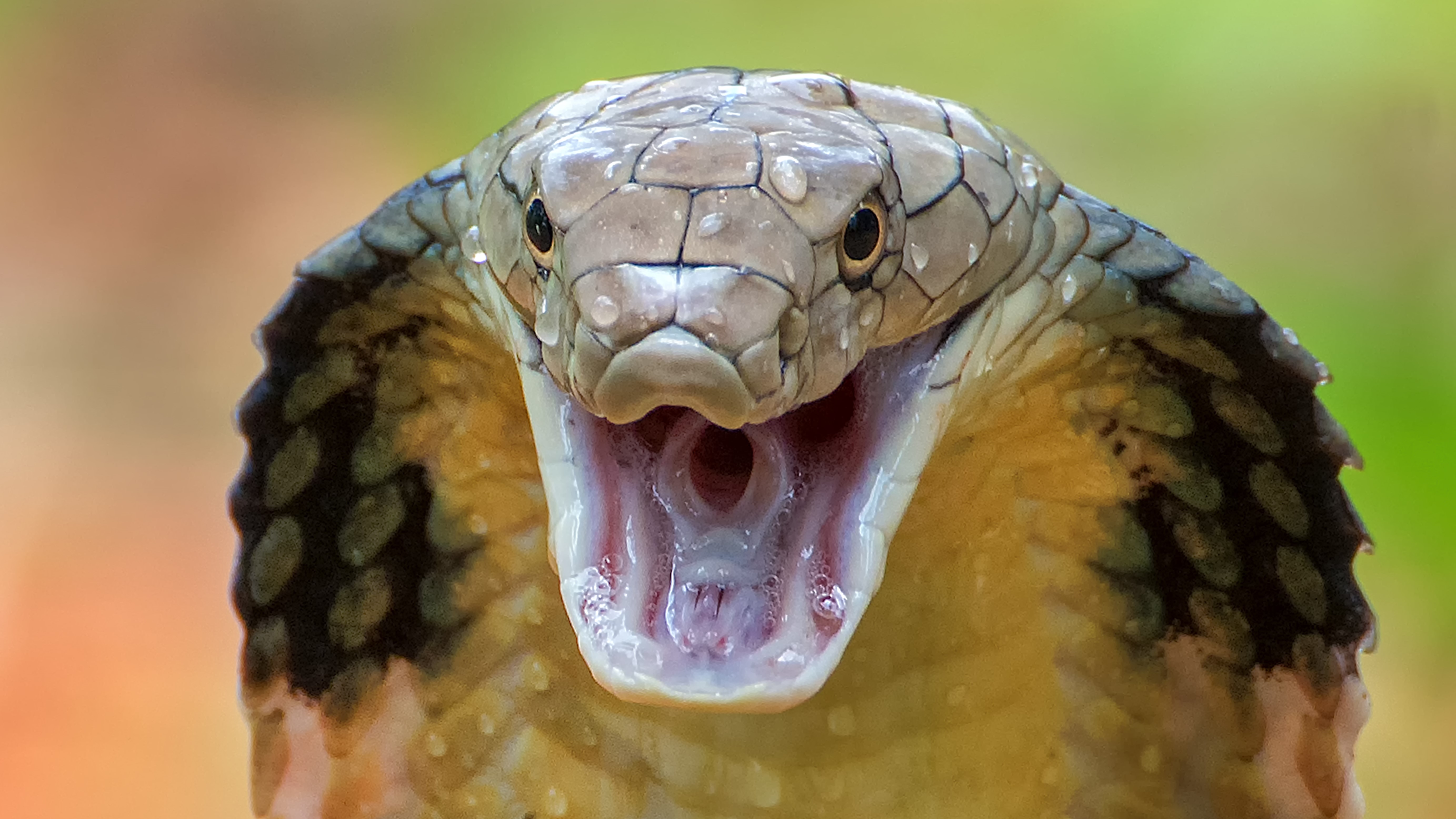
They hiss, they slither and unfortunately for humans and unsuspecting prey, they bite. Venomous snakes bite about 5.4 million people every year, resulting in between 81,000 and 138,000 deaths, according to the World Health Organization.
Their secret weapon is of course venom, which contains toxic substances produced in a modified salivary gland that the animal then injects into prey using their fangs.
Venom first evolved around 60 million years ago, after large constrictors like boa constrictors and pythons diverged from other snakes, Agneesh Barua, an evolutionary geneticist at the University of Lausanne in Switzerland, told Live Science in an email.
These non-venomous ancestors likely already made mildly toxic proteins in their secretory glands, which gave them a huge advantage when capturing prey.
Agneesh Barua is an evolutionary geneticist and Human Frontier Science Program (HFSP) Long-Term Postdoctoral Fellow in the Department of Ecology and Evolution at the University of Lausanne in Switzerland. He earned a PhD from the Okinawa Institute of Science and Technology Graduate University (OIST). His dissertation research focused on the evolution of complex traits. His past research focused on the evolution of snake venom.
"Through millions of years, more and more toxins started to get incorporated into the venom," Barua said.
Despite the wide-array of snakes, venoms are mostly composed of four types of compounds: phospholipases, serine proteases, metalloproteases, and three-finger toxins, Barua said. Each type has unique physiological effects. For instance, three-finger toxins prevent nerve transmission, while phospholipases and metalloproteases may digest tissue and cause swelling, tissue death and massive bleeding, he added.
And any given snake's venom may contain multiple compounds, each with their own deadly effects. Here are 13 snakes whose venom can take out humans.
Get the world’s most fascinating discoveries delivered straight to your inbox.
13. Eastern diamondback rattlesnake
Eastern diamondback rattlesnakes (Crotalus adamanteus) are the largest rattlesnakes in the U.S. and are found across southeastern states, including Florida, North Carolina, South Carolina, Alabama, Georgia, Mississippi and Louisiana.
They are ambush predators and tend to lie quietly coiled away waiting for prey to approach. They can strike a victim up to two-thirds of their body length away, injecting a large quantity of venom with each bite. The species is not aggressive to humans, and bites tend to occur if a snake is intentionally harassed or accidentally stepped on, according to the Florida Museum.
Their venom, which the snakes administer in about 75% to 80% of bites, kills red blood cells and causes severe tissue damage. If left untreated, the fatality rate for an eastern diamondback bite is between 10% and 20%.
12. Common death adder
Common death adders are found across coastal areas of southern, eastern and northern Australia. They are recognizable thanks to their broad, triangular heads, short, thick bodies and thin tails. Common death adders are ambush predators and wait for prey — including frogs, lizards and birds — under leaves until they are ready to strike.
Bites to humans are rare and normally involve a person stepping on one by accident. Their venom causes paralysis and can lead to death: Before the introduction of antivenom in the 1950s, about 60% of bites were fatal, according to the Australian Museum. The most recently recorded human fatality from a common death adder bite was in 1930.
11. Eastern brown snake
Eastern brown snakes are endemic to eastern Australia and are responsible for more human fatalities than any other snake species in the country. Their venom is highly potent, containing powerful toxins that can cause paralysis and internal bleeding. The initial bite is often painless, according to the Australian Museum.
"They're the only snakes in the world that regularly kill people in under 15 minutes," Bryan Fry, who studies venom at the University of Queensland, told ABC News in 2024. "Even more insidiously than that is that for the first 13 minutes, you're going to feel fine."
They generally hunt during the day and are often found in the suburbs of cities and large towns, putting them in close contact with humans. Many eastern brown snake bites are the result of people trying to kill them.
10. Black mamba
Black mambas are some of the scariest snakes on the planet. Named for the dark, inky color inside of their mouths, black mambas are actually brownish in color. They average around 8 feet (2.5 meters) in length. Fast and deadly, these blue-tinged snakes are thought to be responsible for up to 20,000 deaths a year, though precise numbers are hard to come by.
Is a black mamba bite always fatal?
Africa's deadliest snake, the black mamba (Dendroaspis polylepis) can kill a person with just two drops of venom, Live Science reported.
Their venom belongs to the class of three-finger toxins, meaning they kill by preventing nerve cells from working properly.
The snakes are born with two to three drops of venom in each fang, so they are lethal biters right from the get-go. By adulthood, they can store up to 20 drops in each of their fangs, according to Kruger National Park.
Without treatment, a bite from this African snake is just about always lethal. In the case of the black mamba, the venom prevents transmission at the junction between nerve cells and muscle cells, causing paralysis. The toxin may also have a direct effect on heart cells, causing cardiac arrest.
That was the case for a South African man who got bitten by a black mamba on his index finger, Ryan Blumenthal, of the University of Pretoria, reported in The Conversation. By the time he got to the hospital, within 20 minutes, he was already in cardiac arrest. Even though doctors treated him with antivenom, the man ended up dying days later, Blumenthal said.
Blumenthal estimates it is responsible for the largest number of snake-related deaths in southern Africa.
How fast is a black mamba?
Black mambas are fast. They can move at around 12 mph (19 km/h).
Where do black mambas live?
Black mambas live in large swaths of sub-Saharan Africa, in the following countries: Burkina Faso, Cameroon, Central African Republic, Democratic Republic of the Congo, South Sudan, Ethiopia, Eritrea, Somalia, Kenya, Uganda, Tanzania, Burundi, Rwanda, Mozambique, Eswatini, Malawi, Zambia, Zimbabwe, Botswana, South Africa, Namibia and Angola, according to the South African National Biodiversity Institute (SANBI).
They live in savannas, open woodlands, and rocky hills, according to SANBI. They like to sleep in hollow trees, abandoned termite mounds and in the cracks between rocks, according to SANBI.
9. Fer-de-lance
A bite from a fer-de-lance (Bothrops asper) can turn a person's body tissue black as it begins to die, according to a 1984 paper published in the journal Toxicon. These pit vipers, which live in Central and South America and are between 3.9 and 8.2 feet (1.2 and 2.5 m) long and weigh up to 13 pounds (6 kg), are responsible for about half of all snakebite venom poisonings in Central America, according to a 2001 study published in the journal Toxicon.
Viper venom belongs to a class of proteins called metalloproteases. These can digest tissue, causing tissue to die (necrosis), swell (edema) or bleed, Barua said.
Fer-de-lance venom is also an anticoagulant (a substance that hinders blood clotting), a bite from this snake can cause a person to hemorrhage.
And if that didn't scare you off, consider this: A female can give birth to 90 fierce offspring, according to the University of Costa Rica.
8. Boomslang
About 24 hours after being bitten on the thumb by a juvenile boomslang (also called a South African green tree snake), herpetologist Karl Patterson Schmidt died from internal bleeding from his eyes, lungs, kidneys, heart and brain, researchers reported in 2017 in the journal Biochimica et Biophysica Acta. The snake had been sent to Schmidt at The Field Museum in Chicago for identification. Like others in the field at the time (1890), Schmidt believed that rear-fanged snakes like the boomslang (Dispholidus typus) couldn't produce a venom dose big enough to be fatal to humans. They were wrong.
The boomslang, which can be found throughout Africa but lives primarily in Swaziland, Botswana, Namibia, Mozambique and Zimbabwe, is one of the most venomous of the so-called rear-fanged snakes, according to the University of Michigan Museum of Zoology. Such snakes can fold their fangs back into their mouths when not in use. As in other deadly snakes, this one has hemotoxic venom that causes their victims to bleed out internally and externally, the Museum reported.
With an egg-shaped head, oversized eyes and a bright-green patterned body, the boomslang is quite the looker. When threatened, the snake will inflate its neck to twice its size and expose a brightly colored flap of skin between its scales, according to the SANBI. Death from a boomslang bite can be gruesome. As Scientific American describes it: "Victims suffer extensive muscle and brain hemorrhaging, and on top of that, blood will start seeping out of every possible exit, including the gums and nostrils, and even the tiniest of cuts. Blood will also start passing through the body via the victim's stools, urine, saliva, and vomit until they die." Luckily, there is antivenom for the boomslang if a victim can get it in time.
7. Eastern tiger snake
Native to the mountains and grasslands of southeast Australia, the eastern tiger snake (Notechis scutatus) is named for the yellow and black bands on its body, though not all populations sport that pattern, according to the Australian Museum. Its potent venom can cause poisoning in humans in just 15 minutes after a bite and is responsible for at least one death a year on average, the University of Adelaide reported.
6. Russell's viper
What is the deadliest snake in the world?
It's hard to get accurate estimates, as many people who are bitten by snakes live in regions with poor medical care and never report their encounters with the deadly reptiles. But around 58,000 deaths in India are attributed to snake bites every year, and the Russell's viper (Daboia russelii) is responsible for the majority of these mortalities, according to research published March 25, 2021, in the journal PLOS Neglected Tropical Diseases. This species is considered one of the most deadly of the true vipers, researchers reported in 2021 in the journal Toxins.
In Sri Lanka, where this nocturnal viper likes to rest in paddy fields, they cause high mortality among paddy farmers during harvest time. The snake's venom can lead to an awful smorgasbord of symptoms: acute kidney failure, severe bleeding and multi-organ damage, researchers reported in the Handbook of Clinical Neurology in 2014. Some components of the venom related to coagulation can also lead to acute strokes, and in rare cases, symptoms similar to Sheehan's syndrome in which the pituitary gland stops producing certain hormones. Victims typically die from renal failure, according to the handbook.
5. Saw-scaled viper
The saw-scaled viper (Echis carinatus) is the smallest member of the "Big Four" in India — along with Russell's viper, the common krait (Bungarus caeruleus) and the Indian cobra (Naja naja) — thought to be responsible for the most bites and related deaths in the country. Along with their fellow vipers, the Russel's viper and the pit viper, these nondescript little reptiles may be responsible for about 58,000 deaths a year in India alone.
Rather than the stereotypical "hissing" sound attributed to snakes, this viper starts "sizzling" by rubbing together special serrated scales when threatened, according to a journal statement.
Once bitten by this viper, a person will have localized swelling and pain in the area, followed by potential hemorrhage. Since the venom messes with a person's ability to clot blood, it can lead to internal bleeding and ultimately acute kidney failure, according to the educational society Understanding Animal Research. Hydration and antivenom (there are nine types of antivenom for this snake) should be administered within hours of the bite for a person to survive, Understanding Animal Research said.
4. Banded krait
The banded krait (Bungarus fasciatus) is a slow mover during the day and is much more likely to bite after dark. The snake's venom can paralyze muscles and prevent the diaphragm from moving, according to a 2016 study published in the journal PLOS Neglected Tropical Diseases. This stops air from entering the lungs, effectively resulting in suffocation.
3. King cobra
The king cobra (Ophiophagus hannah) is the world's longest venomous snake, measuring up to 18 feet (5.4 m), according to the Natural History Museum in London. The snake's impressive eyesight allows it to spot a moving person from nearly 330 feet (100 m) away, according to the Smithsonian Institution. When threatened, a king cobra will use special ribs and muscles in its neck to flare out its "hood" or the skin around its head; these snakes can also lift their heads off the ground about a third of their body length, according to the San Diego Zoo.
Its claim to fame is not so much the potency of its venom, but rather the amount injected into victims: Each bite delivers about 7 milliliters (about 0.24 fluid ounces) of venom, and the snake tends to attack with three or four bites in quick succession, the Fresno Zoo reported. Even a single bite can kill a human in 15 minutes and an adult elephant in just a few hours, Sean Carroll, molecular biologist at the University of Maryland, wrote in The New York Times.
2. Coastal taipan

You could be bitten multiple times before becoming aware of the coastal taipan (Oxyuranus scutellatus), thanks to its incredible speed, according to the Australian Museum. When threatened, this snake, which lives in the wet forests of temperate and tropical coastal regions, will lift its whole body off the ground as it jumps fangs-first with extraordinary precision and injects venom into its enemy. Before 1956, when an effective antivenom was produced, this snake's bite was nearly always fatal, according to Australian Geographic. The snake's venom contains neurotoxins, which prevent nerve transmission.
1. Inland taipan
The inland taipan is one of the most venomous snakes, according to the International Journal of Neuropharmacology, meaning just a teensy bit of its venom can kill prey (or human victims). They live tucked away in the clay crevices of Queensland and South Australia's floodplains, often within the pre-dug burrows of other animals. Living in more remote locations than the coastal taipan, the inland taipan rarely comes into contact with humans, the Australian Museum reported. When the taipan does feel threatened, the snake coils its body into a tight S-shape before darting out in one quick bite or multiple bites. A main ingredient of this venom, which sets it apart from other species, is the hyaluronidase enzyme. According to a 2020 issue of Toxins journal (Novel Strategies for the Diagnosis and Treatment of Snakebites), this enzyme increases the absorption rate of the toxins throughout the victim's body.
Originally published on Live Science Aug. 31, 2021.
Jeanna Bryner is managing editor of Scientific American. Previously she was editor in chief of Live Science and, prior to that, an editor at Scholastic's Science World magazine. Bryner has an English degree from Salisbury University, a master's degree in biogeochemistry and environmental sciences from the University of Maryland and a graduate science journalism degree from New York University. She has worked as a biologist in Florida, where she monitored wetlands and did field surveys for endangered species, including the gorgeous Florida Scrub Jay. She also received an ocean sciences journalism fellowship from the Woods Hole Oceanographic Institution. She is a firm believer that science is for everyone and that just about everything can be viewed through the lens of science.
- Tia GhoseEditor-in-Chief (Premium)



